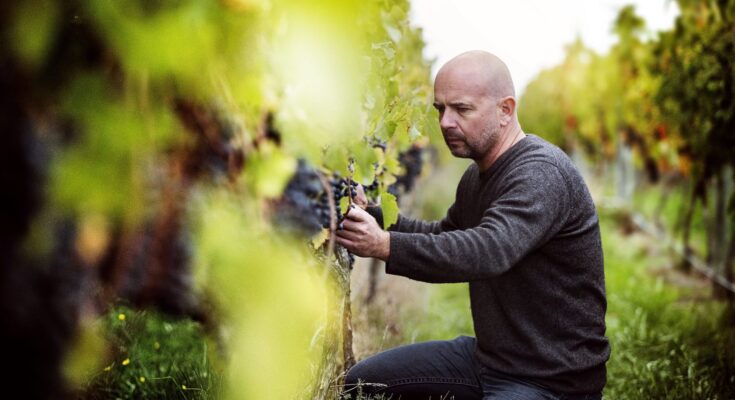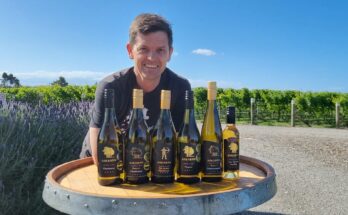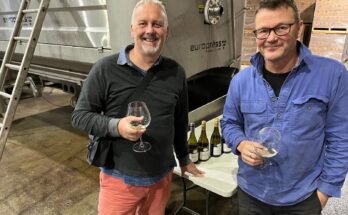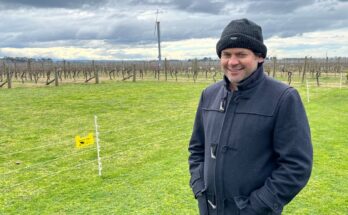I manage to track down Chris Scott, winemaker at Church Road, who has been on my radar for a while now. I start by asking about how he got started at Church Road, and that I’d read somewhere that it was the first, and only, place he’d worked in the wine industry..?
Chris Scott: I had a young family at the same time, so the prospect of three months travelling, doing vintages overseas – the travelling winemaker thing wasn’t particularly appealing at that time. So I never went overseas and made wine. We’re now owned by Pernod Ricard obviously, so we’ve worked with a number of international people – there’s connections there. There’s plenty of experience and different influences and viewpoints within the business. And then just the people you talk to. I absolutely recommend to anyone who is getting into wine, to go and get some experience overseas and do some different things. But equally – one thing that’s perhaps not talked about quite so much – I think that to make good wine, more than anything, you have to understand your environment.
WineFolio: You must have a fairly unique perspective then?
CS: I’d like to think I could move anywhere and make reasonable wine, but you’d never make as good a wine walking into a new region, as you would for having worked in that region for 10-20 years.
Understanding what each vineyard delivers. What each individual plot on those vineyards deliver. Variations in soil type. Understanding that if the vintage does ‘this’, then ‘that’ often works. And it works for this vineyard but not for that one. If I get dealt these conditions then I know, from past experience, this is what I need to look for. This what I need to ‘not do’.
That’s huge. Absolutely, had I gone overseas and done some vintages, that would have added another string to my bow. But likewise, knowing the regions so well, and our vineyards so well, I think is a huge advantage to me as well. You can do a lot with tasting as well, and exposing yourself to those great wines of the world. And keeping an open mind, and talking, reading, drinking! (laughs)
WF: Do you think you’ll be a ‘one-club man’, or might you plant your own vineyard somewhere and do your own wines?
CS: Never say never. I’ve no plans at this stage, but I’d be lying if I said that I hadn’t thought about it.
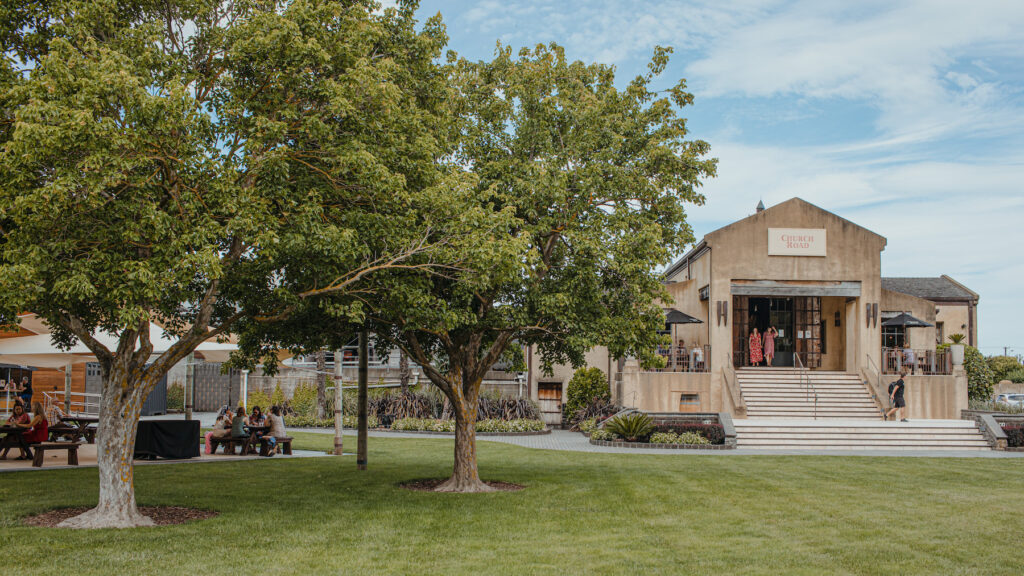
WF: A step sideways. I mean, you’re in one of the top jobs in New Zealand now, so there’s not too much further ‘up’ to go?
CS: I think I’m very lucky to work where I work. Pernod Ricard see their role for Church Road in the portfolio as ‘fine wine’ so are prepared to invest behind that. Likewise they leave the winemakers alone to get on with what we do. We steer the styles of the wines. I get less interference than any other winemaker I know, unless they own the business. It’s very much ‘you’re the winemaker, that’s your side of the business…here’s the budget – don’t spend more than that’.
WF: So if Church Road gets more promotion as one of Pernod Ricard’s fine wine brands.. will you have to be putting in appearances overseas?
CS: Yes, probably. I’d be lying if I said that’s my favourite part of the job.
WF: What about judging?
CS: I’ve done a bit of judging in the past. I’d probably do it more happily now that I’ve got my feet well and truly under the table here I guess. There’s often just a lot of competing priorities.
WF: With the TOM wines being well recognised now, and with a limited number of vintages available for any winemaker to do their best work… you can’t really afford to be distracted from that, by other things.
CS: I am very aware of that, and conscious of the fact that we are quite a small team. Time is precious, so we do try as much as possible. If a chef cooks a bad steak, he just throws it away and starts again. Whereas if you have a bad vintage you have to wait twelve months.
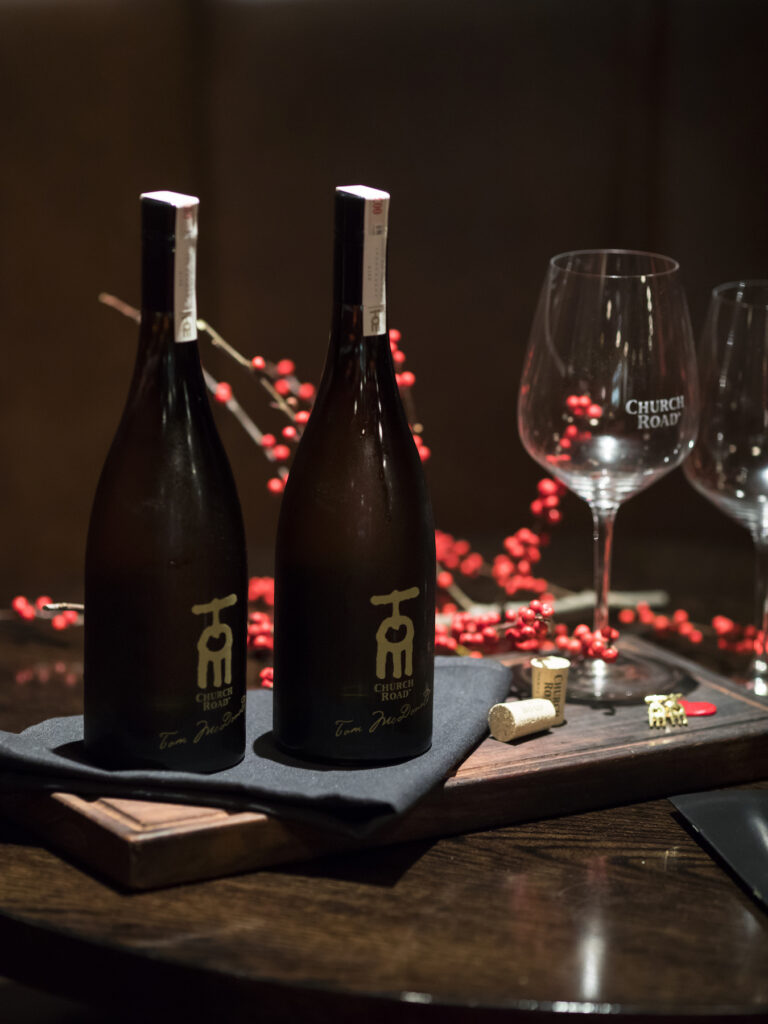
WF: What’s the best thing about making wine? What gives you joy from that?
CS: I think there’s different aspects of it. I really like that process of evolving the styles of the wines. We’re never resting on our laurels. Always trying to get better and I have a picture in my head of were I want to get to with the wines and what would be the ideal. But I think that those goalposts slowly move as your ideas change. You gain more experience, you taste more wines, you get a bit older and your tastes change. Then that ideal goal tends to evolve slightly as well. We’re always just trialling.
WF: Is there a sense that you’re making what you think is good, and hoping that everyone else likes it?
CS: Yes (laughs). I tend to think it’s a little bit price point reflective. At the lower price points, I’m trying to make something that most people will enjoy. If people are going to go into a supermarket and pick a wine up off the shelf for $15-20 and take it home and it’s full of flavour and it’s textural, and it’s kind of punchy… people are going to enjoy that. When you get to the higher end of the market, the wines that we make are very much steered by what I want to drink! Again, it’s about having that picture of what that perfect wine is, in your mind, and trying to get as close as possible to attaining that.
WF: And do the two ends of the market have to be quite different wines? Do the top end wines almost have to be quite ‘difficult, complicated’ almost? Harder to understand? Otherwise you may just as well have the $20 one?
CS: Yes probably, to some extent. As people’s tastes in wines evolve, and certainly as mine did. When I first starting drinking wine I thought massive, big, oaky chardonnay was great. And I thought Barossa Shiraz was great. And I though Marlborough Sauvignon Blanc was great. And they’re all just like a punch in the face, basically. Over the top and in your face wines without a lot of subtlety or nuance.
But as my tastes evolved, those wines became boring. I work on the assumption that most people who are serious about fine wine are in the same boat. You start your wine drinking journey and as you learn more about it your tastes become a bit more refined. You prize elegance, balance, complexity and subtlety more, rather than being smacked around the head.
WF: What do you think makes a great wine? Is it balance? My first rule is ‘delicious’.
CS: Yes, I guess so. The only think I’d say is you can have a wine that’s balanced, but boring. And I think a wine needs to be more than balanced – it needs a hook, it needs some character. It needs something beyond that. It’s like you could listen to an absolutely perfect musician who plays with no soul, and it’s just boring to listen to. And a musician who brings soul, emotion and character into the music, and may not be the most technically proficient musician in the world.. I know which one I’d rather listen to.
WF: What’s different about a TOM – compared to, say a Grand Reserve, or the ‘One’ wines?
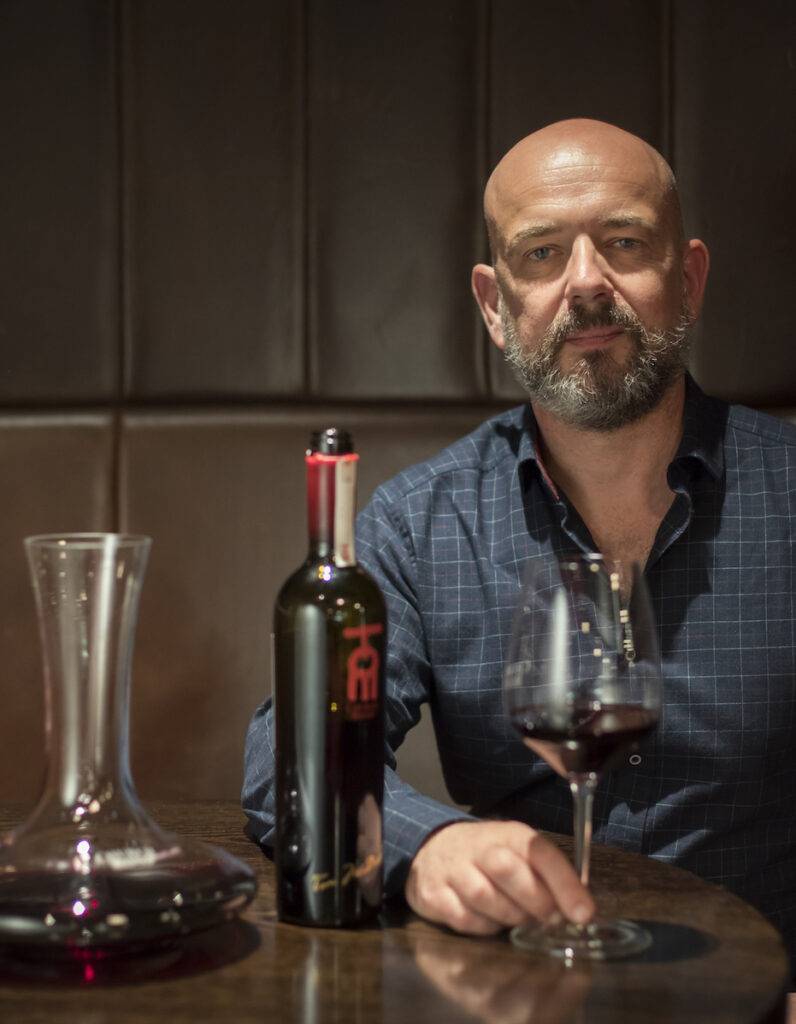
CS: Tom is the Grand Cru basically. Pretty much everything at that Grand Reserve, One and TOM level has no expense spared in the vineyard. They all get that ‘Rolls Royce’ treatment in terms of thinning and canopy management. But then within that you’re always going to get parcels of land that naturally perform better. And that may not necessarily be the same parcel of land every year.
Within that we’ve got some options where we can barrel age all the wines separately and taste through – which we’re about to do this week actually for the 2020s. And then pick out the very best of the best. And that will be TOM. With ‘One’ what we’re really looking for is not necessarily better than Grand Reserve, but something that is a very good reflection of one of our vineyards, and why we like the wine from that site.
And then the other thing that we do with the Chardonnay is we press them all directly to barrel. So every single barrel is a separate press pass of each parcel of fruit. We get down to barrel by barrel selection when we get to TOM, and it’s invariably the first few barrels off the press. That gives you a lot more fineness on the palate, and a tighter, more linear profile with higher acidity, lower pH, which means those wines tend to age very well as well.
WF: What’s different about Hawke’s Bay?
CS: The interesting thing about Hawke’s Bay is that we talk about the region, and other than Gimblett Gravels and to a lesser extent the Bridge Pa triangle perhaps, we don’t talk about sub-appellations. But Hawke’s Bay is a big region – it’s an area about the size of Lebanon. We talk about Hawke’s Bay in an area that in South Australia would encompass the Adelaide Hills, the Barossa Valley, the Eden Valley. They are all talked about as separate appellations because they are separate altitudes and climatically quite different. And Hawke’s Bay is the same.
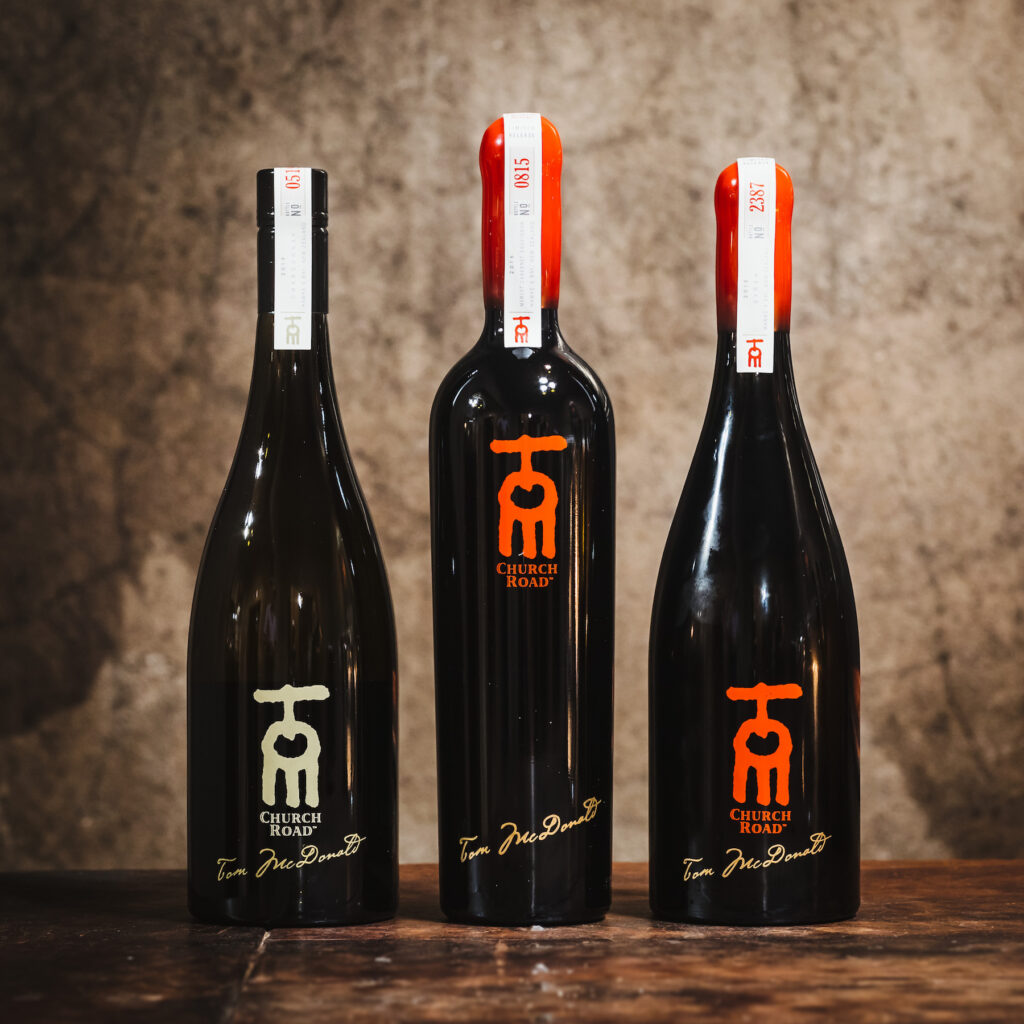
If you go up to Crownthorpe Terraces – we’re growing up there at about 1250 growing degree days, which is quite cold. At Tukituki Valley we’re about 1350 growing degree days, and Bridge Pa and Gimblett Gravels is around 1500 growing degree days. You’re spanning just about the cooler end of Burgundy right up to Bordeaux, as growing degree days.
WF: Central Hawke’s Bay – is that going to be a new thing?
CS: It’s possibly under explored at the moment. There’s a lot of gravelly soils down there, and limestone. It’s actually drier. If you’re down in Waipawa and Waipukurau along the Tukituki River valley it’s drier. Lime Rock have shown you can make some pretty good wines from their site.
WF: Where does Church Road sit in the New Zealand world of wines? Do you think you’re people’s ‘favourite label’ for example? I’m asking because I do often hear that..
CS: We get people telling us that Church Road is their favourite brand, so…! (laughs) One of the things we always, always aspire to do, is that every price point we try to over-deliver. We do a lot of comparative tastings, to make sure we know our markets, and what’s on offer at that price point. If your Church Road Chardonnay’s on special for $16 – we want that to be better than any other $16 Chardonnay that’s on the shelf. That’s subjective to a degree. It’s machine harvested rather than hand harvested, but we are still using free-run juice, it’s got oak influence, malo and lees stirring. We’ve tried to keep it flavoursome.
There’s a tendency with a lot of low-end Chardonnays to strip all the oak out of it, but if anything we’ve been pushing the oak a bit. Almost a nod towards the old school Chardonnay. You’re not talking about wines that people are going to sit and pontificate about. For most people they just want some flavour, and if we can offer something with a bit of character, that’s not necessarily the most refined wine in the world, but offers something that most wines in that category wouldn’t offer.
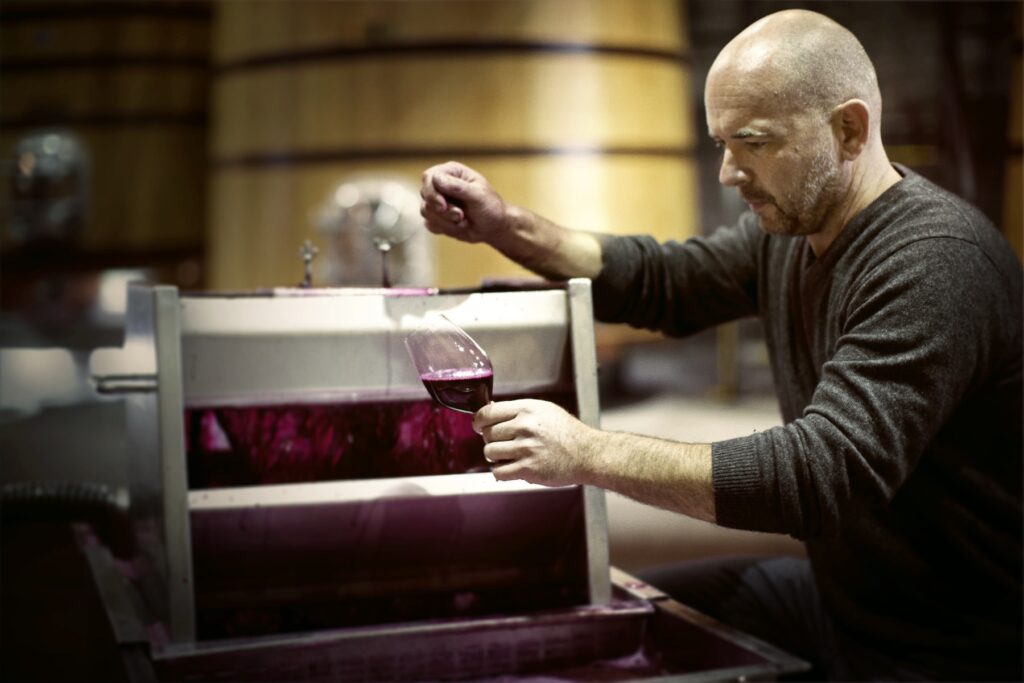
WF: What do you think is next for New Zealand – or what should we promoting to the world as our next step? Do you think there’s almost too many up-and-coming things – that it would be hard to focus the message?
CS: If you talk about Hawke’s bay being a big place – then look at the climatic and soil variations across New Zealand. There are a number of places suitable to grow grapes and can make very good wine, albeit in different styles. One variety that performs well across New Zealand and is starting to get a lot of attention in the right circles – from a critic point of view certainly – is Chardonnay. And that to me is very very promising. And I think our good Chardonnays stack up with the very best in the world.
Syrah is small but it punches so far above it’s weight. That International Wine Challenge where we’ve just won the International Syrah Trophy, I’m pretty sure that’s the fifth year in a row that Hawke’s Bay Syrah has won that Trophy.
For something that’s 2.5% of Hawke’s Bay vineyard area, the accolades that we get internationally for that variety is incredible.
WF: What about sparkling, because I believe that a day will come where New Zealand makes the best sparkling wines in the world.
CS: We make just a small amount for the Cellar Door at the moment, and that’s the only one we make. But then our parent company makes the Cordon Mumm Marlborough, and the Deutz. I don’t know if you’ve tried the Mumm Marlborough, but it’s delicious. It’s really good.
And there’s some really good Pinot Noir outside of Central as well – there’s some very good Pinots around the country. I was always a big fan of Martinborough Pinot.
WF: Yes – so we have a few stories to tell, and that can be a distraction.
CS: From a marketing point of view, yes – but then the counter to that, and I know they’ve had a lot more time to educate people about regional differentiation in a country like France. It’s not one wine story is it? If you look at the range of climatic conditions across France, except for when you get right into the southern areas – you could easily sit New Zealand climates in there, from northern Burgundy to Bordeaux. I think there’s some merit to be seen, in the long run, as a fine wine country, and not hang our hat on a variety.
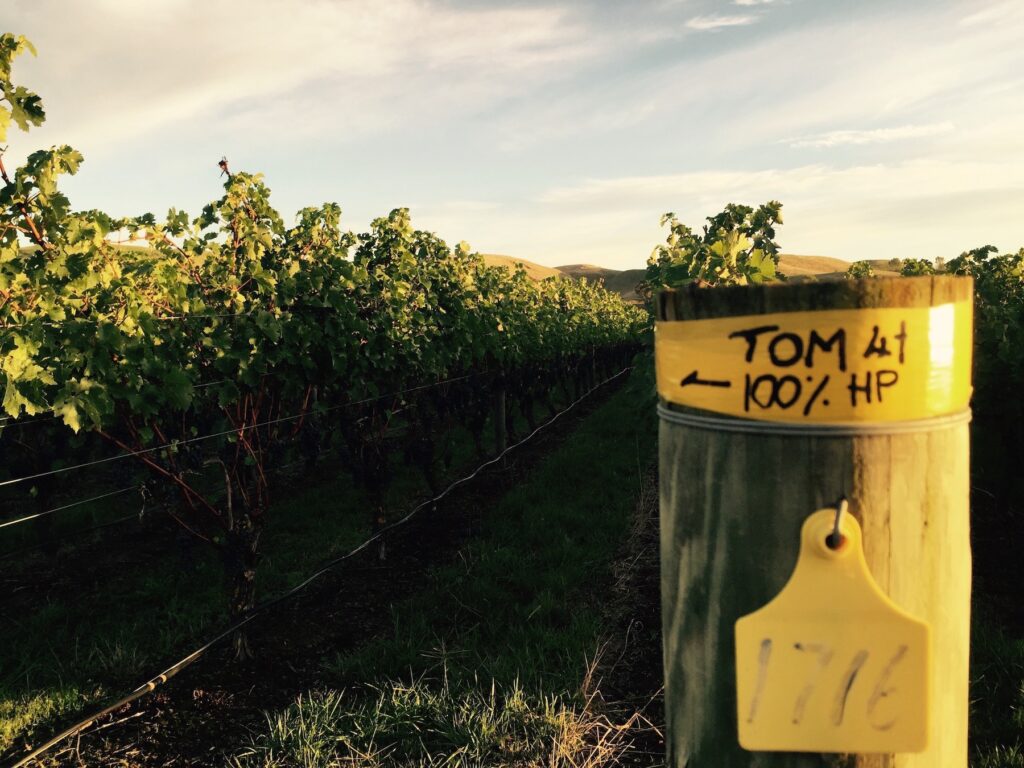
WF: is there anything else that you would like to make, that you haven’t, or don’t make here? You mention Pinot, for example – have you got a great barrel of that hidden somewhere?
CS: Funny you mention that. We got some great fruit from a single site in Lowburn, Central Otago in 2019 actually – so we have got a bit of Pinot tucked away. We’ll be buying a little bit more in 2021. Just small compared to the rest of the range..
WF: Nothing else – something Italian, because you’ve got a few bits and bobs?
CS: Yes, we have Tempranillo, Marzemino. The one I’d quite like to have a play with just to see what we could coax out of it, would be Nebbiolo. Warren and Lorraine have planted a wee bit of Nebbiolo on their hillside, but only enough for a barrel.
WF: Any advice you’d give your younger self? That’s publishable?
CS: Looking back on it, there was a Catch-22 because the opportunities here developed very quickly but also kept me very busy. I was running to catch up all the time. I was investing a lot of time here. And I would have loved to have gone and done a couple of overseas vintages and seen that. But with one thing and another it never quite worked out. I guess we all tend to look for the next thing, and what we haven’t got.
WF: I think with COVID-19 we’ve had a chance to reflect a bit about stuff like that.
CS: I think we have. I know at home it’s changed our perspective on things. We were looking at renovations – increasing the square metres of our house.. and now we look at that and go ‘why?’
Winemaking’s not a work from home type of job, but I ended up working semi-remotely for two and a half weeks. Over harvest we were trying to keep the winery and vineyard teams separate. I crossover as I’m running around in the vineyards doing fruit assessments and things like that. I ended up doing fruit assessments and then going home and doing all the harvest planning. And then if there was any tasting that had to be done, our operations winemaker was organising a sample basket and dropping it in the park for me and I’d go and pick it up. Trying to not have any link between separate shifts, and vineyard separate from winery.
It was hard for us. We found that things we would do face to face, we have massive whiteboards all over the place covered in magnets – trying to do that remotely and build systems for that on the fly. Sitting at desk at home doing 15-hour days basically. The only good thing about it was my partner works at a school, so she was definitely at home, doing nothing but baking and cooking; and apart from vineyard visits in the morning the rest of the day I was sitting at a desk, and not leaving it. Just got brought food, and it’s the only harvest I’ve ever put on weight. I put on two kilos and I normally lose about five!
WF: Is there anybody that you wish could try your wine?
CS: Be pretty cool if Tom McDonald could try it.

